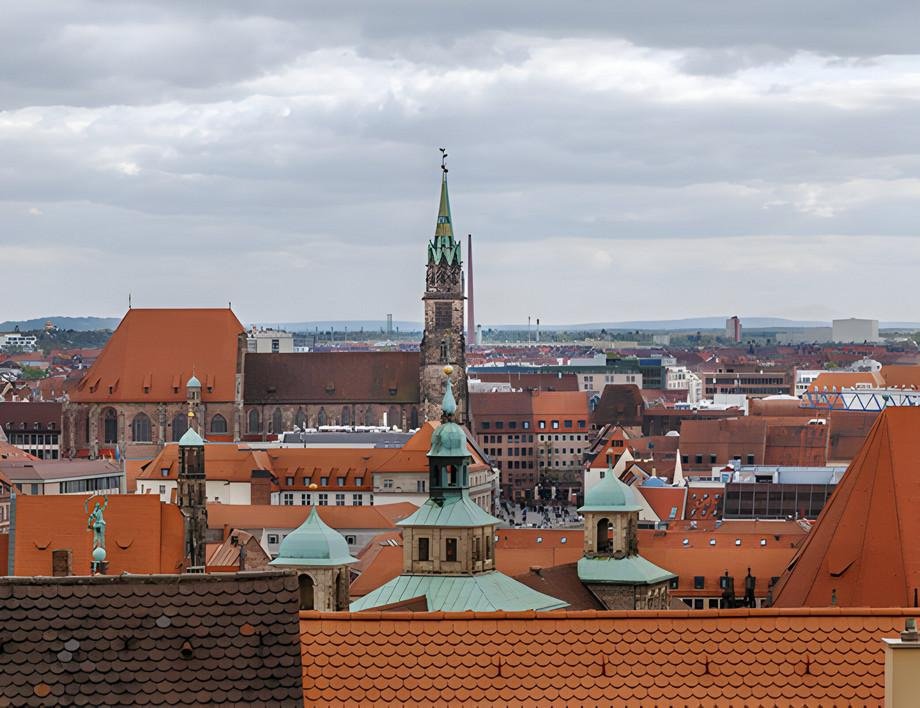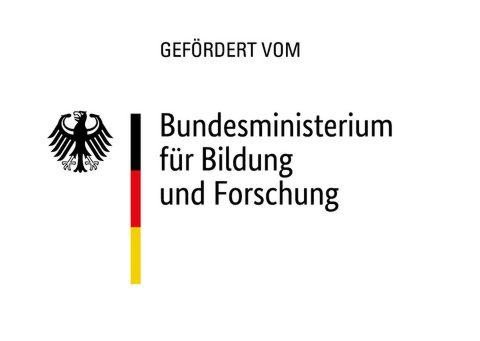Projects
Current research projects
Nuremberg’s cathedrals – best practice for the digital capture of complex architectural monuments

An interdisciplinary team from the Universities of Passau and Bamberg and other contributors are creating a comprehensive digital model of Nuremberg's St. Lorenz church, highlighting the property's information content and incorporating the spatial dimension of constructed architecture.
Focusing on the information content of material cultural heritage
Nuremberg's St. Sebald and St. Lorenz cathedrals can be considered complex ‘collections' of a variety of individual objects, such as portals, pillows, arch profiles, sculptures and high-quality features, which convey a whole range of information on social, artistic and architectural history as well as construction, materials and conservation, and they are also meaningfully interconnected within a differentiated spatial structure and form their own meaning space.
Using the St. Lorenz parish church as a reference property, a digitalisation initiative is being undertaken as an interdisciplinary collaboration between the fields of architecture, building research, computer science, visual art, restoration, monument conservation authorities and other experts from the practical world, focusing on the information content of the property itself and incorporating the spatial dimension of the constructed architecture.
Using the MonArch archiving system
From an information technology perspective, the project builds on theMonArch digital archiving system developed at the University of Passau, which is particularly well-suited to culturally significant large building structures, archaeological sites and urban situations and is used by facilities such as the Trier Imperial Baths and the Weissenhof Estate in Stuttgart, both UNESCO World Heritage Sites. The MonArch system uses a graphical reconstruction combined with a structural representation of the building and all of its parts that is designed to answer queries, such as a room book. The result is an innovative organisational structure for archiving all the relevant digital documents, but also a basis for a detailed description of the building's characteristics.
Networking information sources
The Passau subproject is also developing a new expansion to the MonArch software to make existing datasets available via the Internet, so as to enable networking with other information sources and data use in other information systems (‘linked open data'). This enables other scholars to access the compiled data files in a targeted fashion and use them in their research work.
Participants and funding
Building researcher Professor Stefan Breitling of the Centre for Heritage Conservation Studies and Technologies (KDWT) at the Otto Friedrich University in Bamberg is coordinating the group and heading the building research/art history subproject. Other participants include the Centre's spokesperson Professor Rainer Drewello, and Professor Stephan Albrecht, holder of the Chair of Art History specialising in Medieval Art History. Professor Burkhard Freitag of the Institute of Information Systems and Software Engineering is heading up the computer science subproject at the University of Passau.
| Principal Investigator(s) at the University | Prof. Dr. Burkhard Freitag (Institut für Informationssysteme und Softwaretechnologie (IFIS)) |
|---|---|
| Project period | 01.02.2018 - 31.01.2021 |
| Source of funding |  BMBF - Bundesministerium für Bildung und Forschung |
| Projektnummer | 01UG1883BX |
| Themenfelder | Informatik, Angewandte Informatik, Informatik |
| Förderhinweis | The Federal Ministry of Education and Research (BMBF) is promoting the project for a period of three years (funding reference: 01UG1883AX). |
Completed projects
Nuremberg’s cathedrals – best practice for the digital capture of complex architectural monuments

An interdisciplinary team from the Universities of Passau and Bamberg and other contributors are creating a comprehensive digital model of Nuremberg's St. Lorenz church, highlighting the property's information content and incorporating the spatial dimension of constructed architecture.
Focusing on the information content of material cultural heritage
Nuremberg's St. Sebald and St. Lorenz cathedrals can be considered complex ‘collections' of a variety of individual objects, such as portals, pillows, arch profiles, sculptures and high-quality features, which convey a whole range of information on social, artistic and architectural history as well as construction, materials and conservation, and they are also meaningfully interconnected within a differentiated spatial structure and form their own meaning space.
Using the St. Lorenz parish church as a reference property, a digitalisation initiative is being undertaken as an interdisciplinary collaboration between the fields of architecture, building research, computer science, visual art, restoration, monument conservation authorities and other experts from the practical world, focusing on the information content of the property itself and incorporating the spatial dimension of the constructed architecture.
Using the MonArch archiving system
From an information technology perspective, the project builds on theMonArch digital archiving system developed at the University of Passau, which is particularly well-suited to culturally significant large building structures, archaeological sites and urban situations and is used by facilities such as the Trier Imperial Baths and the Weissenhof Estate in Stuttgart, both UNESCO World Heritage Sites. The MonArch system uses a graphical reconstruction combined with a structural representation of the building and all of its parts that is designed to answer queries, such as a room book. The result is an innovative organisational structure for archiving all the relevant digital documents, but also a basis for a detailed description of the building's characteristics.
Networking information sources
The Passau subproject is also developing a new expansion to the MonArch software to make existing datasets available via the Internet, so as to enable networking with other information sources and data use in other information systems (‘linked open data'). This enables other scholars to access the compiled data files in a targeted fashion and use them in their research work.
Participants and funding
Building researcher Professor Stefan Breitling of the Centre for Heritage Conservation Studies and Technologies (KDWT) at the Otto Friedrich University in Bamberg is coordinating the group and heading the building research/art history subproject. Other participants include the Centre's spokesperson Professor Rainer Drewello, and Professor Stephan Albrecht, holder of the Chair of Art History specialising in Medieval Art History. Professor Burkhard Freitag of the Institute of Information Systems and Software Engineering is heading up the computer science subproject at the University of Passau.
| Principal Investigator(s) at the University | Prof. Dr. Burkhard Freitag (Institut für Informationssysteme und Softwaretechnologie (IFIS)) |
|---|---|
| Project period | 01.02.2018 - 31.01.2021 |
| Source of funding |  BMBF - Bundesministerium für Bildung und Forschung |
| Projektnummer | 01UG1883BX |
| Themenfelder | Informatik, Angewandte Informatik, Informatik |
| Förderhinweis | The Federal Ministry of Education and Research (BMBF) is promoting the project for a period of three years (funding reference: 01UG1883AX). |

